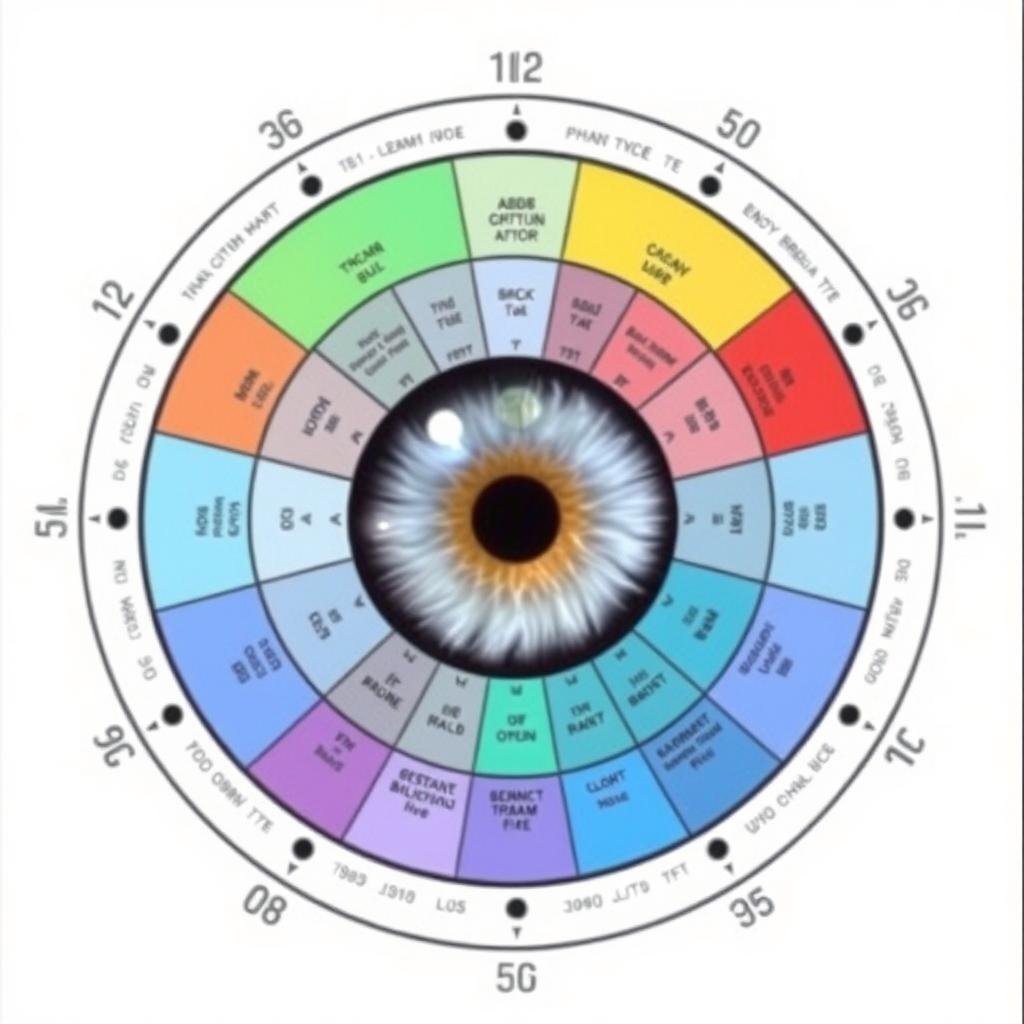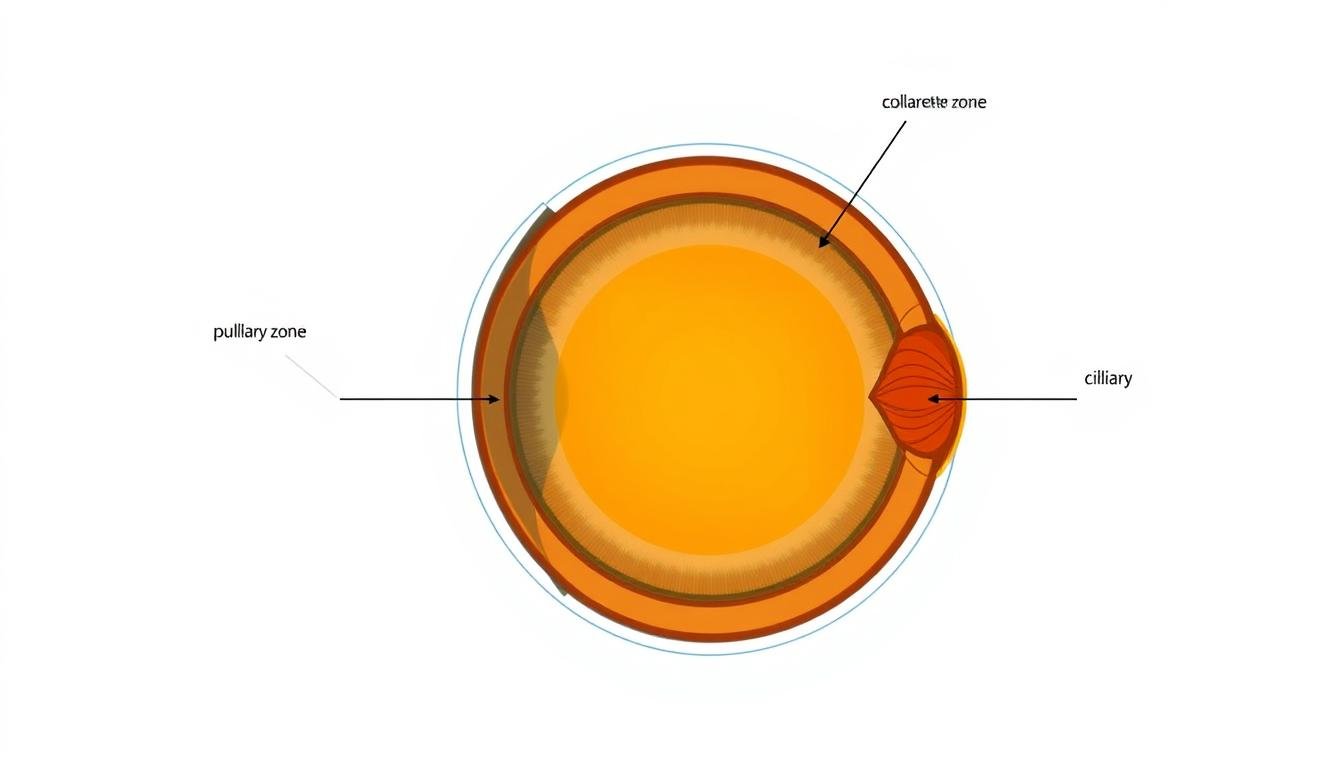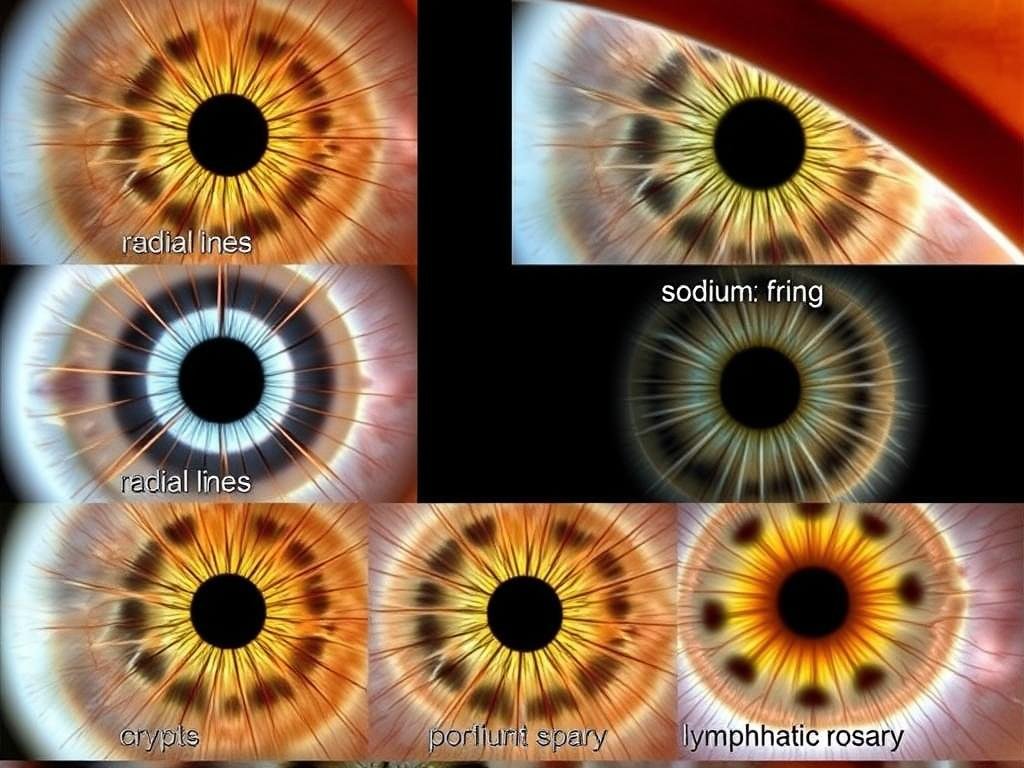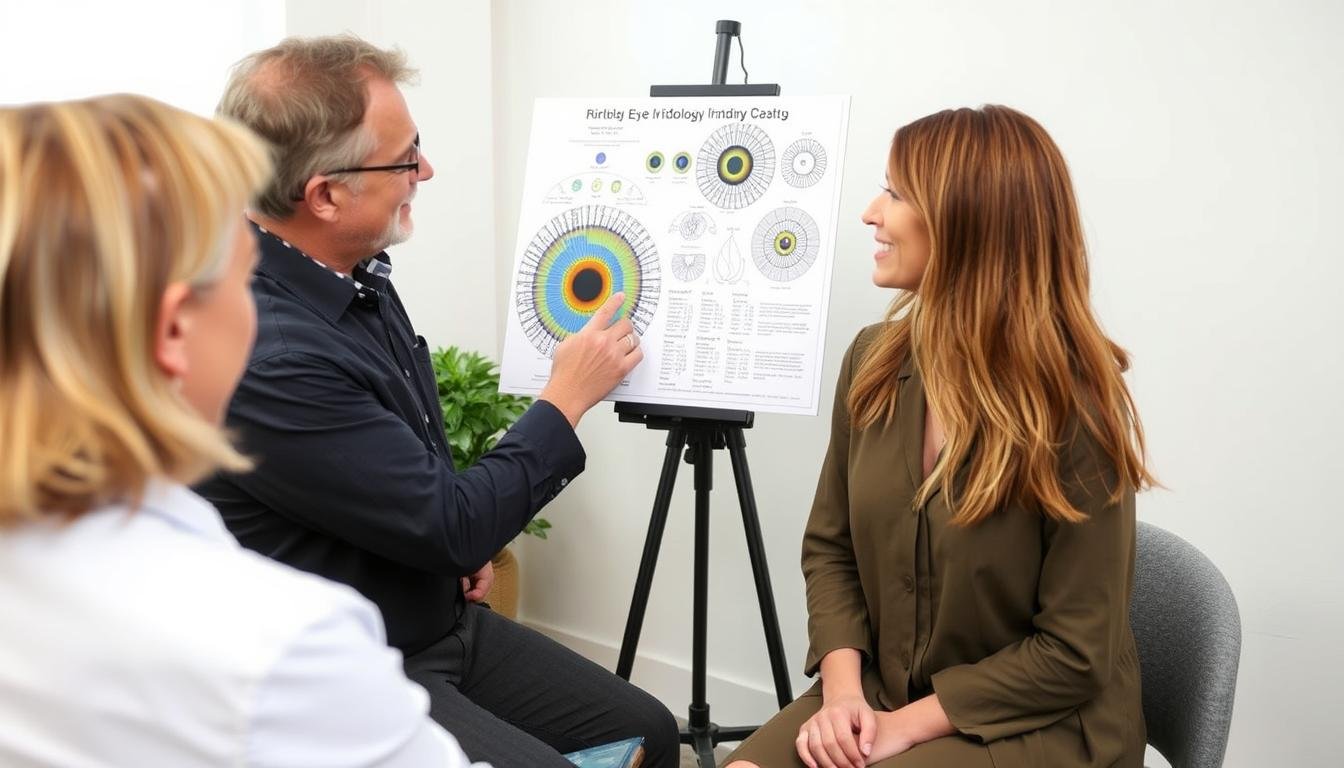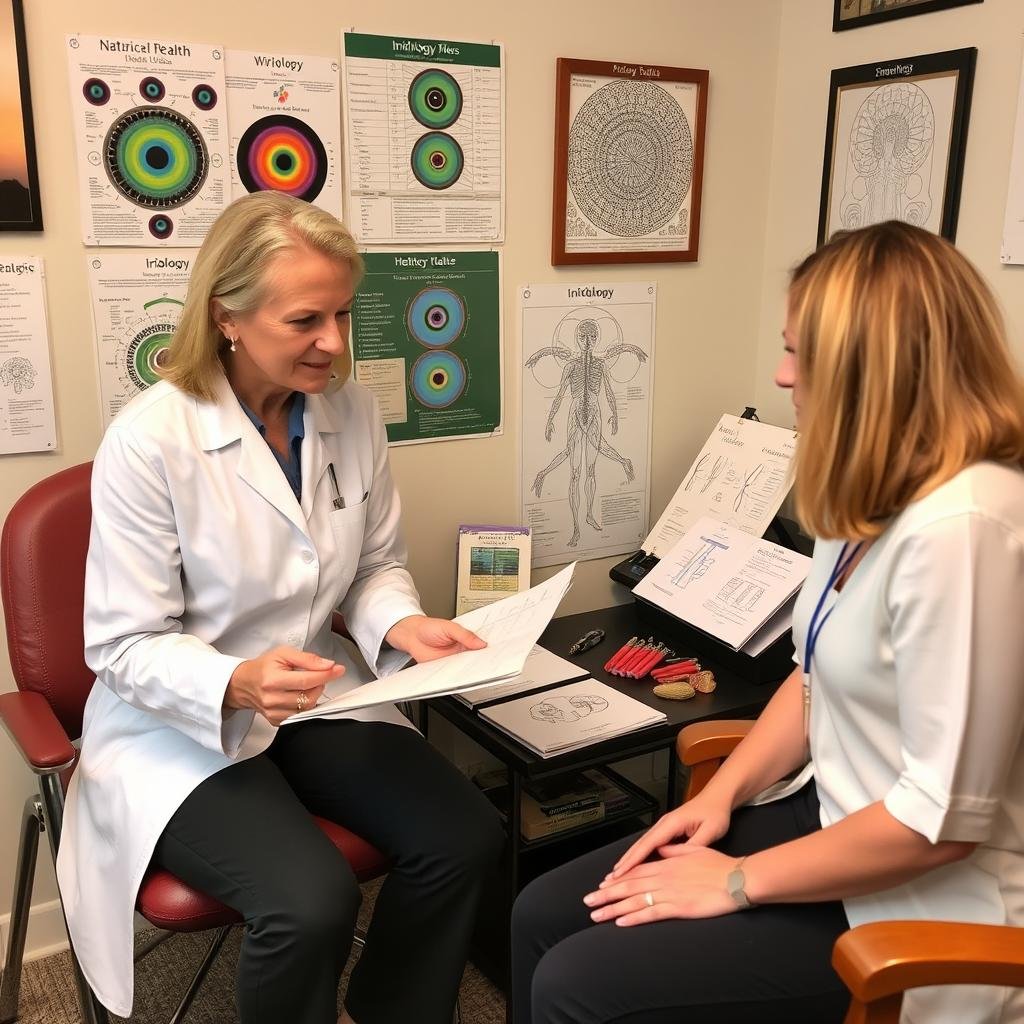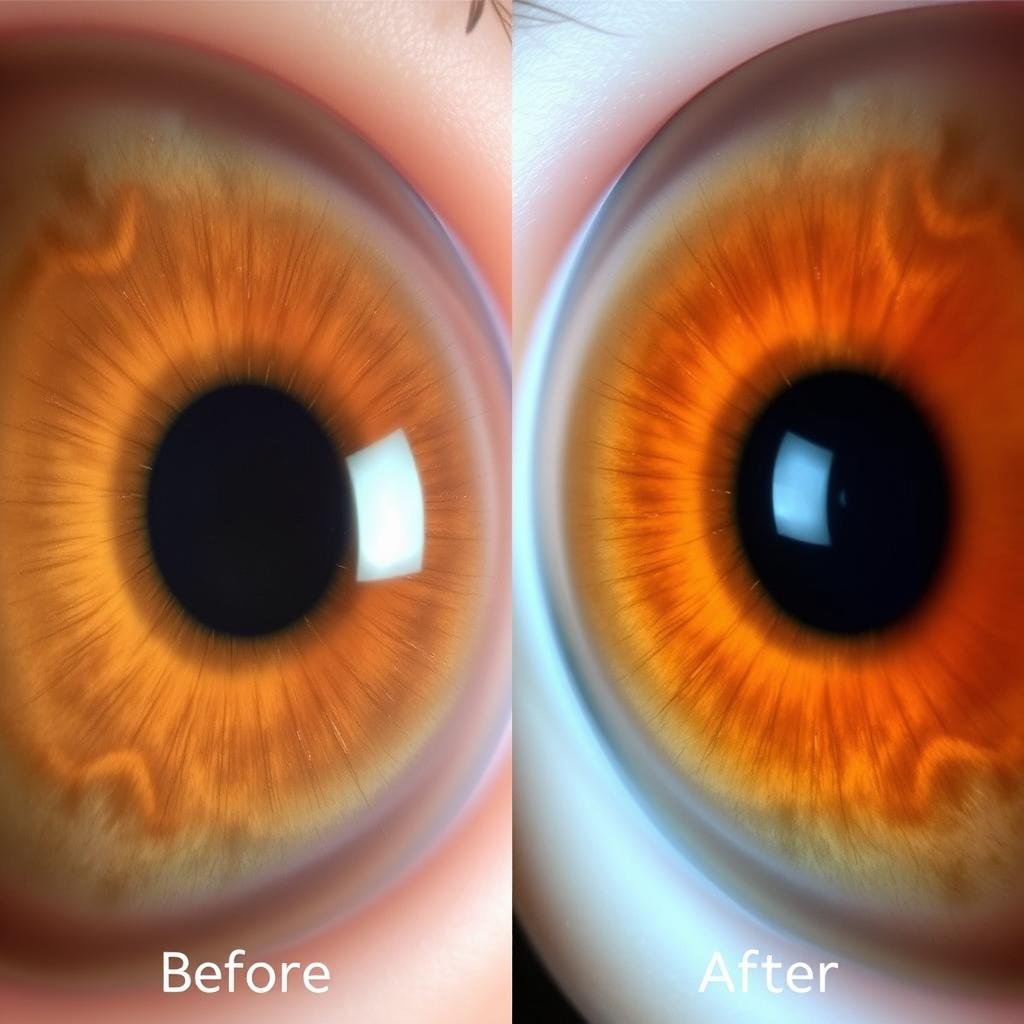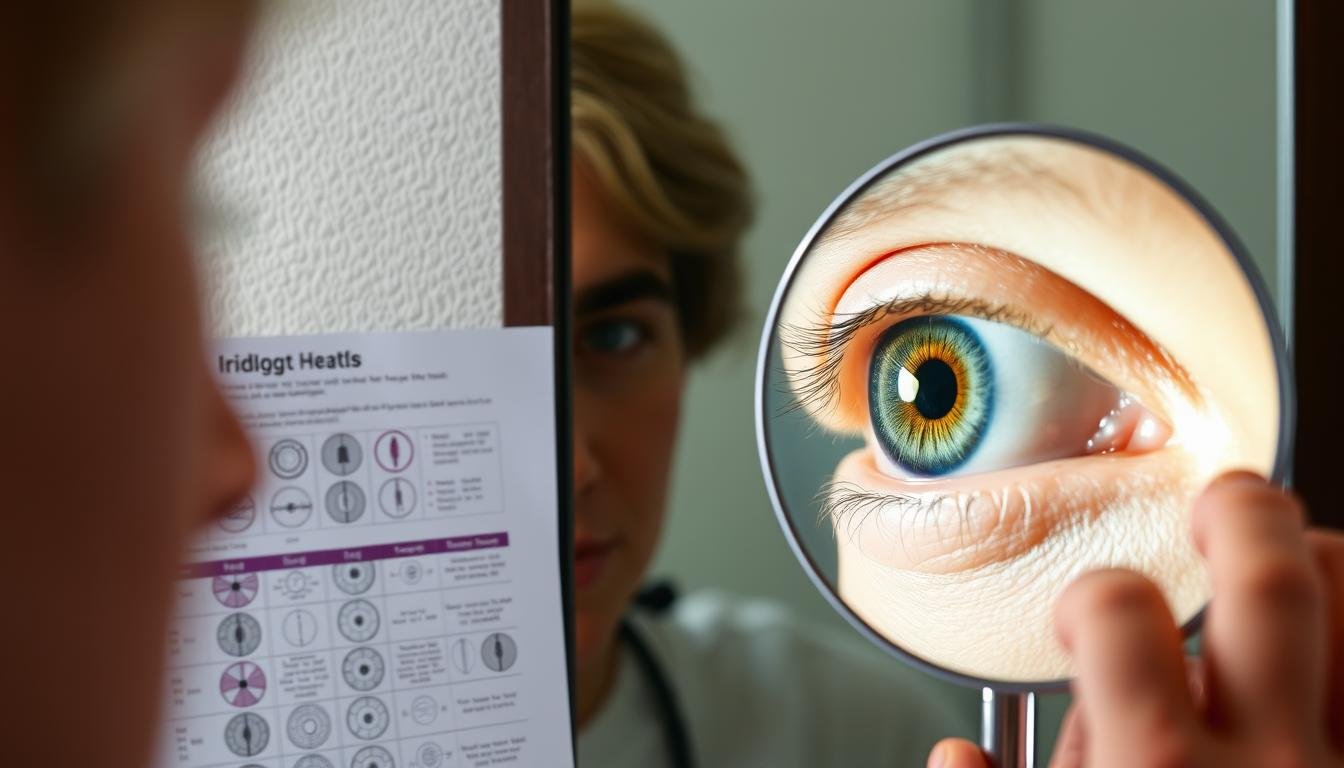O Iridology Gráfico de olho direito is a fascinating tool that maps the colored part of your eye to various organs and systems in your body. This ancient practice suggests that the patterns, colors, and markings in your right iris can reveal valuable insights about your health. Whether you’re curious about natural health assessment methods or seeking to understand what your eyes might be telling you about your wellbeing, this comprehensive guide will walk you through everything you need to know about right eye iridology charts and how to interpret them.Understanding the Basics of Iridology Gráfico de olho direito


A detailed iridology chart showing the mapping of the right iris to various body systems
Iridology is the study of the iris—the colored part of your eye—to assess potential health conditions and constitutional strengths and weaknesses. Practitioners believe that different zones of the iris correspond to various organs and systems in the body. The Iridology Gráfico de olho direito serves as a specialized map that helps interpret these connections specifically for the right eye.
According to iridology principles, the right iris primarily corresponds to the right side of your body and reflects the condition of organs located on that side. This includes the right kidney, right lung, right side of the brain, and liver (which is predominantly on the right side). The chart divides the iris into multiple sections, creating a detailed map that iridologists use to analyze your health.
History of Iridology and Right Eye Analysis
The practice of iridology dates back to the early 17th century, but it was Dr. Ignatz von Peczely, a Hungarian physician, who is often credited with developing the first comprehensive iris chart in the 1860s. The story goes that as a child, von Peczely noticed changes in an owl’s iris after the bird suffered a broken leg. This observation sparked his interest in the connection between iris markings and physical conditions.
Over the decades, various practitioners refined these charts, eventually developing specialized maps for both the left and right eyes. The Iridology Gráfico de olho direito evolved to become more detailed, with practitioners noting that the right iris often provides specific insights into liver function, gallbladder health, and the right side of the skeletal structure.

The evolution of right eye iridology charts from the 19th century to modern versions
How to Interpret an Iridology Gráfico de olho direito
Interpreting an iridology chart requires understanding the fundamental layout and what each zone represents. The right iris is typically divided into multiple concentric zones and radial sectors, creating a map that correlates to different body systems and organs.
Key Zones in the Right Eye Chart
O Iridology Gráfico de olho direito typically follows a clock-like division, with different areas corresponding to specific body parts:
- Região superior (12 horas): Cérebro, cabeça e seios
- Upper Right Quadrant (1-3 o’clock): Throat, thyroid, right lung, and right breast
- Lado direito (3 horas): Liver, gallbladder, and right kidney
- Lower Right Quadrant (4-6 o’clock): Appendix, ascending colon, and right reproductive organs
- Bottom Region (6 o’clock): Lower digestive system and elimination organs
- Lower Left Quadrant (7-9 o’clock): Descending colon and lower spine
- Lado esquerdo (9 horas): Heart and spleen
- Upper Left Quadrant (10-12 o’clock): Left lung and left breast

Clock-like division of the right iris with corresponding body systemsAdditionally, the iris is divided into concentric rings from the pupil outward:
- Pupillary Zone (innermost): Represents digestive system and stomach
- Collarette Zone (middle): Indicates circulatory and respiratory systems
- Ciliary Zone (outer): Reflects skin, muscles, bones, and lymphatic system

The three concentric zones of the right iris and their corresponding body systems

Gráfico de iridologia e olho direito -Iridologia -olho direito
OLHO DIREITO reflete lado direito corpo.
| Posição do relógio (olho direito) | Corresponde Organ/System | Detalhes |
|---|
| 1 hora - 2 horas | Rosto direito | Corresponde aos órgãos reprodutivos esquerdos, incluem útero, ovários (mulheres) ou testículos (masculino). |
| 2 horas - 3 horas | Garganta direita
| Os elevadores de saúde deixaram as juntas, incluem joelhos, quadris, cotovelos e ombros. |
| 3 horas - 4 horas | Parte superior da parte superior da parte de trás
| Corresponde à coluna vertebral, saúde da coluna vertebral, alinhamento e flexibilidade. |
| 4 horas - 5 horas | Bexiga direita | Anel Flacks bexiga e sistema urinário do lado direito. |
| 5 horas - 6 horas | Pélvico direito | RingPresents deixaram o cólon, o intestino delgado e a saúde digestiva. |
| 6 horas - 7 horas | Abdômen inferior direito
| Os elegantes do rim esquerdo, foco na filtração, desintoxicação e balanço de fluidos. |
| 7 horas - 8 horas | Abdômen superior direito
| Os elegantes do estômago e os órgãos digestivos no lado esquerdo. |
| 8 horas - 9 horas | Tórax direito | Corresponde ao fígado do lado esquerdo, desintoxicação responsável e produção biliar. |
| 9 horas - 10 horas | Pulmão direito | RingPresents Lado esquerdo Coração, saúde cardiovascular e circulação afetada. |
| 10 horas - 11 horas | Pescoço direito | Os elegantes deixaram o pulmão, a saúde respiratória e a função BRA. |
| 11 horas - 12 horas | Cérebro direito
| Corresponde ao cérebro do hemisfério esquerdo, à saúde mental e às funções cognitivas. |
| 12 horas - 1 hora | Cérebro direito
| Corresponde ao cérebro do hemisfério esquerdo, à saúde mental e às funções cognitivas. |
Step-by-Step Guide to Analyzing the Right Eye Chart
Analyzing the right iris using an iridology chart involves a systematic approach. Here’s a practical guide to help you understand the process:

Professional examination of the right iris using specialized tools
- Prepare proper lighting: Use natural daylight or a bright, white light source to illuminate the iris clearly.
- Use magnification: A magnifying glass of at least 5x power or a specialized iridology camera is essential for detailed observation.
- Identify the iris type: Determine if the iris is blue, brown, mixed, or another color, as this affects interpretation.
- Map the iris to the chart: Compare what you see with an Iridology Gráfico de olho direito to identify which body systems correspond to the areas you’re examining.
- Look for markings: Note any spots, lines, rings, or discolorations in the iris.
- Analyze the markings: Interpret what these markings might indicate about your health based on their location, color, and appearance.
- Documente suas descobertas: Take photos or notes to track changes over time.
Common Markings in the Iridology Gráfico de olho direito
Various markings in the right iris can indicate different health conditions according to iridology principles:
| Marking Type | Aparência | Indicação potencial |
| Linhas Radiais | Straight lines radiating from pupil to outer iris | Nerve stress or circulation issues in the corresponding organ |
| Lacuna | Enclosed dark areas resembling lakes | Potential tissue damage or lesions in the corresponding organ |
| Criptas | Small, dark, oval-shaped openings | Fraqueza inerente no órgão correspondente |
| Sodium Ring | White ring around the outer edge of the iris | Potential salt accumulation, often linked to joint issues |
| Rosário linfático | White dots forming a ring in the iris | Congestão do sistema linfático |
| Manchas de pigmento | Dark spots or freckles | Toxin accumulation in specific organs |

Common iris markings and their significance in iridology analysis
Right vs. Left Eye Iridology Chart Comparison
Understanding the differences between right and left eye iridology charts is crucial for comprehensive analysis. While both eyes provide valuable information, they represent different aspects of your health.
| Aspecto | Tabela de olhos à direita | Maço ocular esquerdo |
| Lado primário do corpo | Right side of the body | Left side of the body |
| Major Organs Represented | Liver, gallbladder, right kidney, right lung | Heart, spleen, left kidney, left lung |
| Hemisfério cerebral | Cérebro esquerdo (lógica, análise) | Cérebro direito (criatividade, intuição) |
| Energy Principle | Yang/masculine energy | Yin/feminine energy |
| Inherited Traits | Paternal inheritance | Maternal inheritance |

Side-by-side comparison of right and left eye iridology charts
For a complete health assessment, iridologistas recommend examining both eyes, as they provide complementary information. The Iridology Gráfico de olho direito focuses more on the digestive system, particularly the liver and gallbladder, while the left eye chart emphasizes the heart and circulatory system.
Benefits of Using the Iridology Gráfico de olho direito
Proponents of iridology suggest several potential benefits to using the right eye chart as part of your health assessment toolkit:
Benefícios potenciais
- Non-invasive health assessment method
- May identify potential health issues before symptoms appear
- Provides insights into constitutional strengths and weaknesses
- Helps track changes in health over time
- Encourages preventative health measures
- Complements other natural health approaches
- Focuses on whole-body connections rather than isolated symptoms
Limitações
- Limited scientific evidence supporting effectiveness
- Não é possível diagnosticar doenças específicas
- Interpretation varies between practitioners
- Não deve substituir o diagnóstico médico convencional
- Results can be subjective
- Requer interpretação qualificada
- May lead to delayed proper medical treatment if relied upon exclusively

Professional iridology consultation using the right eye chart
Discover Your Health Insights
Curious about what your right iris might reveal about your health? Our comprehensive iridology assessment can help identify potential health patterns and constitutional strengths.
Agende uma Consulta
Practical Applications of Right Eye Iridology
Enquanto iridologia is considered an alternative health practice, many holistic health practitioners incorporate it into their assessment protocols. Here are some practical ways the Iridology Gráfico de olho direito is used:
Saúde Preventiva
Identifying potential weaknesses before they manifest as symptoms, allowing for targeted preventative measures like dietary changes or specific supplements.
Avaliação complementar
Using iridology alongside other health assessments to create a more comprehensive picture of overall health status and potential areas of concern.
Tracking Health Changes
Monitoring changes in the iris over time to assess whether health interventions are having the desired effect on underlying constitutional patterns.
Many natural health practitioners find that the Iridology Gráfico de olho direito provides particularly valuable insights into liver function, digestive health, and the lymphatic system. These systems play crucial roles in detoxification and immunity, making them important focus areas for preventative health strategies.
Perguntas frequentes sobre Iridology Gráfico de olho direito
How accurate is right eye iridology for health assessment?
The accuracy of iridology is debated in the medical community. While many alternative health practitioners report positive results using iridology charts, conventional medicine generally does not recognize it as a diagnostic tool due to limited scientific evidence. It’s best used as a complementary assessment method rather than a primary diagnostic approach.
Can I perform iridology analysis at home?
While you can observe basic iris patterns at home with a magnifying glass and good lighting, proper iridology analysis requires training and experience. Self-assessment may lead to misinterpretation. If you’re interested in iridology, consider consulting with a trained practitioner who can provide accurate analysis and appropriate context for your observations.
Why does the right eye chart focus on different organs than the left?
According to iridology theory, the right eye corresponds primarily to the right side of the body and organs that are predominantly on the right side (like the liver). This connection is believed to relate to the nervous system pathways and embryological development. The left-right differentiation allows for more detailed and specific analysis of different body systems.
How often should I have my iris analyzed?
For those using iridology as part of their health monitoring, practitioners typically recommend an analysis every 6-12 months. However, if you’re addressing specific health concerns or implementing significant lifestyle changes, more frequent assessments (every 3-6 months) might be beneficial to track potential changes in the iris patterns.
Can iridology detect serious health conditions?
Iridology is not designed to diagnose specific diseases or medical conditions. Rather, it may indicate areas of stress or constitutional weakness in the body. If you have symptoms of a serious health condition, it’s essential to consult with a licensed healthcare provider for proper diagnosis and treatment. Iridology should be viewed as a complementary approach, not a replacement for medical care.
Conclusion: Integrating Iridology into Your Health Journey
O Iridology Gráfico de olho direito offers a unique perspective on health assessment that aligns with holistic approaches to wellbeing. While it shouldn’t replace conventional medical care, many find value in the insights it provides about constitutional tendencies and potential areas of focus for preventative health strategies.
Whether you’re a health enthusiast curious about natural assessment methods or someone looking to complement your existing health practices, understanding the basics of right eye iridology can add another dimension to your health awareness. Remember that the most effective approach to health combines multiple perspectives and assessment methods, with iridology potentially serving as one piece of a comprehensive wellness puzzle.

Self-awareness through iridology can be part of a holistic health approach
Comece sua jornada de iridologia hoje
Ready to discover what your eyes reveal about your health? Download our comprehensive Iridology Gráfico de olho direito guide and begin understanding the fascinating connections between your iris patterns and overall wellbeing.
Baixe o gráfico de iridologia grátis




